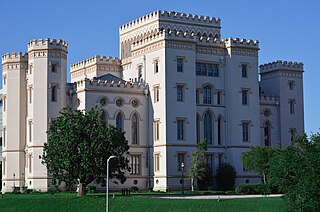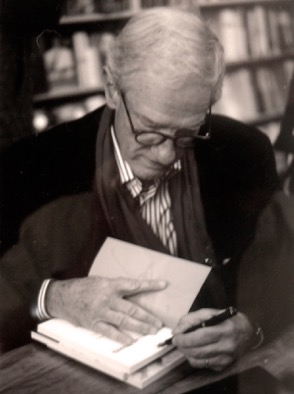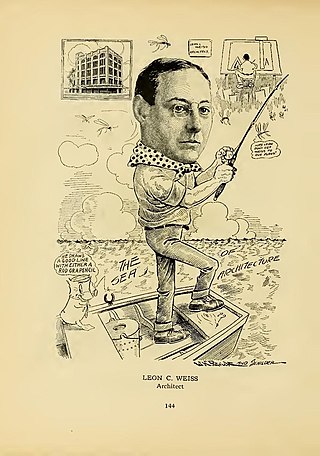
Baton Rouge is the capital city of the U.S. state of Louisiana. Located on the eastern bank of the Mississippi River, it is the parish seat of East Baton Rouge Parish, Louisiana's most populous parish. Since 2020, it has been the second-largest city in Louisiana after New Orleans; Baton Rouge is the 18th-most-populous state capital. According to the 2020 United States census, the city-proper had a population of 227,470; its consolidated population was 456,781 in 2020. The city is the center of the Greater Baton Rouge area—Louisiana's second-largest metropolitan area—with a population of 870,569 as of 2020, up from 802,484 in 2010. Baton Rouge is the fifth most populous city proper in the Deep South region of the southeastern United States.

Hammond is the largest city in Tangipahoa Parish, Louisiana, United States, located 45 miles (72 km) east of Baton Rouge and 45 miles (72 km) northwest of New Orleans. Its population was 20,019 in the 2010 U.S. census, and 21,359 at the 2020 population estimates program.

The Diocese of Baton Rouge, is a Latin Church ecclesiastical territory or diocese in the Florida Parishes region of the U.S. state of Louisiana. It is a suffragan in the ecclesiastical province of the Metropolitan Archdiocese of New Orleans. The current bishop is Michael Duca.

The Louisiana State Capitol is the seat of government for the U.S. state of Louisiana and is located in downtown Baton Rouge. The capitol houses the chambers for the Louisiana State Legislature, made up of the House of Representatives and the Senate, as well as the office of the Governor of Louisiana. At 450 feet (137 m) tall and with 34 stories, it is the tallest skyscraper in Baton Rouge, the seventh tallest building in Louisiana, and tallest capitol in the United States. It is located on a 27-acre (110,000 m2) tract, which includes the capitol gardens. The Louisiana State Capitol is often thought of as "Huey Long's monument" due to the influence of the former Governor and U.S. Senator in getting the capitol built. The building's construction was completed in 1931. It was listed on the National Register of Historic Places in 1978 and was designated a National Historic Landmark in 1982.

Charity Hospital was one of two teaching hospitals which were part of the Medical Center of Louisiana at New Orleans (MCLNO), the other being University Hospital. Three weeks after the events of Hurricane Katrina, then-Governor Kathleen Blanco said that Charity Hospital would not reopen as a functioning hospital. The Louisiana State University System, which owns the building, stated that it had no plans to reopen the hospital in its original location. It chose to incorporate Charity Hospital into the city's new medical center in the lower Mid-City neighborhood. The new hospital completed in August 2015 was named University Medical Center New Orleans.

The Old Louisiana State Capitol, also known as the State House, is a historic government building, and now a museum, at 100 North Boulevard in Baton Rouge, Louisiana, U.S. It housed the Louisiana State Legislature from the mid-19th century until the current capitol tower building was constructed from 1929-32.
Robert Emmet Tracy was an American prelate of the Roman Catholic Church who served as bishop of the Diocese of Baton Rouge in Louisiana from 1961 to 1974. He previously served as an auxiliary bishop of the Diocese of Lafayette in Louisiana from 1959 to 1961.
James Harrison Dakin was an American architect who designed Neo-Gothic buildings and was the architect for the Old Louisiana State Capitol, Old Bank of Louisville, and other public buildings.
A. Hays Town was an American architect whose career spanned over sixty-five years. While Town designed commercial and governmental buildings in the style of modern architecture for the first forty years of his career, he became best known for his residential architecture, which was heavily influenced by the Spanish, French, and Creole history of Louisiana. His work was featured in several publications during his lifetime, including Time, Life, Southern Living, and Southern Accents. Today, there are an estimated 1,000 homes remaining that were designed and built by Town, and his distinct style continues to exert an influence on modern southern architecture.

Louisiana African American Heritage Trail is a cultural heritage trail with 38 sites designated by the state of Louisiana, from New Orleans along the Mississippi River to Baton Rouge and Shreveport, with sites in small towns and plantations also included. In New Orleans several sites are within a walking area. Auto travel is required to reach sites outside the city.

Robert William Muench is an American prelate of the Roman Catholic Church. Muench served as bishop of the Diocese of Baton Rouge in Louisiana from 2002 to 2018. He previously served as bishop of the Diocese of Covington in Kentucky from 1996 to 2002 and as an auxiliary bishop of the Archdiocese of New Orleans in Louisiana from 1990 to 1996.
Angela Gregory was an American sculptor and professor of art. Gregory has been called the "doyenne of Louisiana sculpture". She became one of the few women of her era to be recognized nationally in a field generally dominated by men.
Stanley Joseph Ott, S.T.D., was an American prelate of the Roman Catholic Church. He served as Bishop of Baton Rouge from 1983 until his death in 1992. He previously served as an auxiliary bishop of the Archdiocese of New Orleans from 1976 to1983.

Favrot & Livaudais (1891–1933) was an architectural firm in New Orleans, Louisiana. The firm designed many buildings that are listed on the National Register of Historic Places.

Errol Barron is an American architect, artist, and educator. A founding partner of Errol Barron/Michael Toups Architects, he is professor of architecture at Tulane University. In 1994 he was made a fellow of the American Institute of Architects with supporting letters from Charles Moore, Paul Rudolph, and Jean Paul Carlhian and in 2012 was awarded the Gold Medal for Architecture by the American Institute of Architects, Louisiana, for his "significant and enduring contribution to the advancement of architecture and his inspiring influence on the architects of Louisiana."

Leon Charles Weiss (1882–1953) was an architect in the 20th century who designed various public buildings in Louisiana and Mississippi, especially during the 1930s. Many of Weiss's notable designs were commissioned by populist politician Huey Long and financed by the Public Works Administration. Although he designed in various architectural styles, many of his projects are considered to be PWA Moderne.

The Poplar Grove Plantation, also once known as Popular Grove Plant and Refining Company, is a historic building, site and cemetery, the plantation is from the 1820s and the manor house was built in 1884, located in Port Allen in West Baton Rouge Parish, Louisiana. The site served as a sugar plantation worked by enslaved African Americans, starting in the 1820s by James McCalop. Starting in 1903, the site was owned by the Wilkinson family for many generations.











